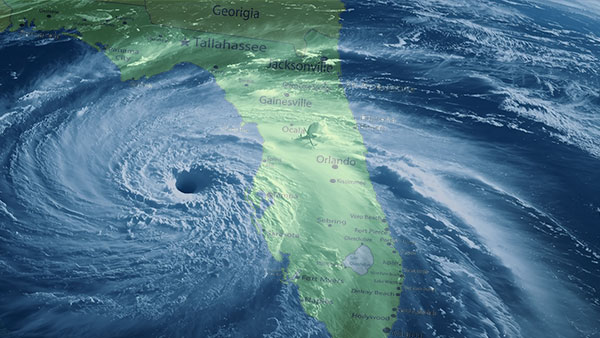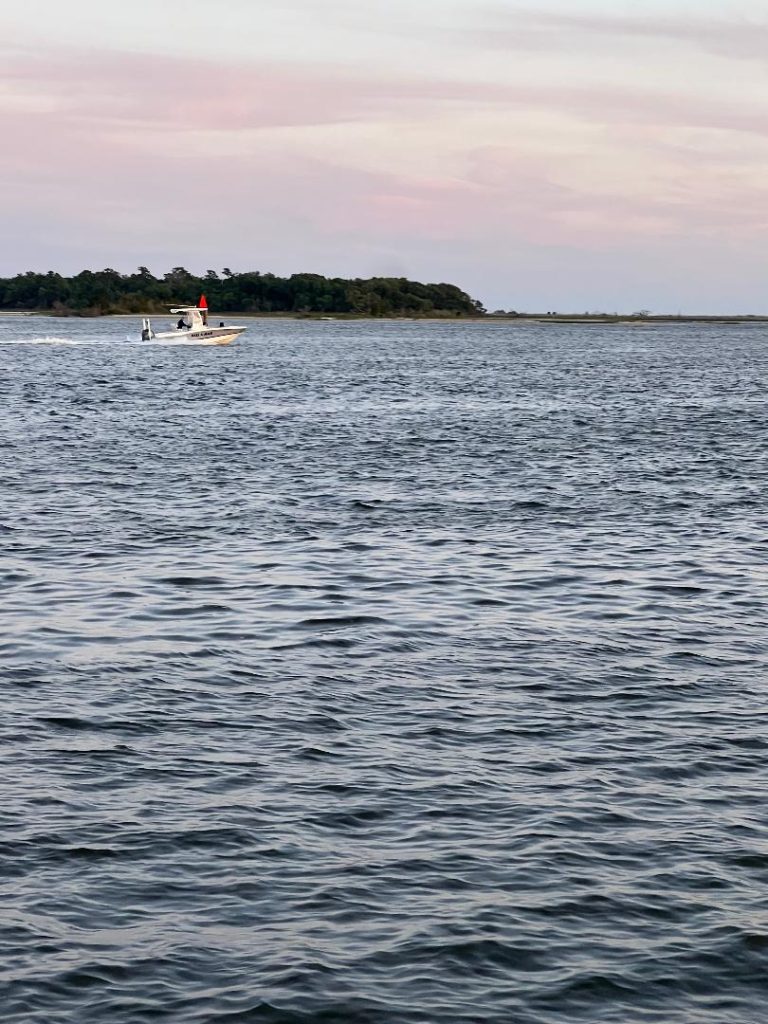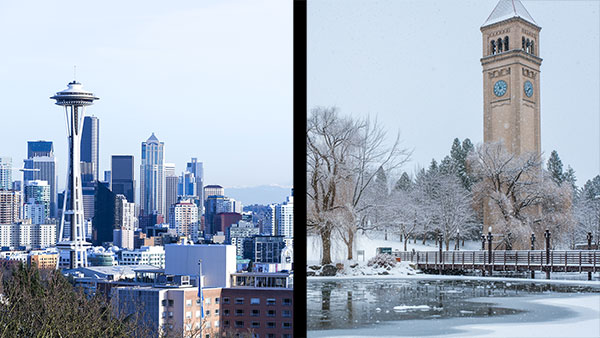Florida sits close to Hurricane Alley, a region which is “the birthplace of hurricanes in the Atlantic” as defined by the National Aeronautics and Space Administration (NASA). This location makes Florida America’s most hurricane-prone state. In fact, according to USA Today, from 1851 to 2022, the Sunshine State has been hit by 120 hurricanes, which is roughly one every 1.4 years.
Hurricanes come with strong sustained winds that can wreak havoc on communities. For instance, Hurricane Ian caused $112.9 billion in damages and over 150 deaths when it made landfall in south Florida in 2022. Meanwhile, Hurricane Irma in 2017 left 6.7 million Floridians without power and caused $865 million in losses statewide.
However, hurricanes aren’t once-in-a-lifetime events. They’re more like statistical inevitabilities that every Florida property owner, business operator, and resident must plan for. Here’s what you need to understand about Florida’s hurricane patterns to protect your property, family, and financial future.
Florida’s Hurricane Season: When the Storms Strike
The Atlantic hurricane season runs from June 1 to November 30, but Florida doesn’t see equal risk throughout those six months. August, September, and October account for roughly 78% of all hurricane landfalls in the state, with September being the peak month, according to the National Oceanic and Atmospheric Administration (NOAA).
Note that most major hurricanes that occur in October hit southern Florida based on a study. Below is a breakdown of Florida hurricane hits during peak season.
Table 1. Major hurricane direct hits on Florida (1851-2022)
| Area | June | July | August | September | October | All |
| Florida | 0 | 1 | 5 | 20 | 11 | 37 |
| Northwest | 0 | 1 | 1 | 7 | 4 | 14 |
| Northeast | 0 | 0 | 0 | 1 | 0 | 1 |
| Southwest | 0 | 1 | 1 | 9 | 6 | 16 |
| Southeast | 0 | 0 | 4 | 10 | 3 | 17 |
Source: NOAA’s Atlantic Oceanographic and Meteorological Laboratory
September stands out as the danger zone. That’s when sea surface temperatures peak, wind shear decreases, and atmospheric conditions align perfectly for major hurricane development. In fact, 20 of Florida’s 37 hurricane strikes from 1851 to 2022 have occurred in September alone, according to data from NOAA’s Atlantic Oceanographic and Meteorological Laboratory.
Meanwhile, early season storms (June-July) tend to be weaker and less organized. Late season hurricanes (October) can still pack a punch, but they’re fighting cooler waters and increased wind shear as winter approaches.
Where Hurricanes Hit Hardest
Not all parts of Florida face equal hurricane risk. The state’s unique geography, i.e., a peninsula jutting 500 miles into warm Atlantic and Gulf waters, creates distinct vulnerability zones.
Table 2. Hurricane direct hits on Florida by Saffir/Simpson category (1851-2022)
| Area | Category | Major Hurricanes | |||||
| 1 | 2 | 3 | 4 | 5 | All | ||
| Florida | 48 | 36 | 27 | 11 | 2 | 121 | 38 |
| Northwest | 36 | 17 | 15 | 0 | 1 | 69 | 16 |
| Southwest | 23 | 11 | 11 | 6 | 1 | 52 | 18 |
| Southeast | 18 | 13 | 8 | 7 | 2 | 48 | 17 |
| Northeast | 21 | 6 | 1 | 0 | 0 | 28 | 1 |
Source: NOAA’s Atlantic Oceanographic and Meteorological Laboratory
Northwest Florida
From 1851 to 2022, there have been around 120 hurricanes to hit the Sunshine State. Of these, 69 directly hit northwest Florida, 16 of which were major hurricanes. Among the worst to hit the region was Hurricane Michael in 2018. It was considered to be the third most intense storm to reach the country, with 919 millibar pressure, according to NOAA.
Southwest Florida
A total of 52 hurricanes made landfall in Southwest Florida from 1851 to 2022. Eighteen of these were major hurricanes, including Hurricane Ian which hit the region in 2022. The Category 4 hurricane caused widespread power outages, a 12-feet storm surge, and extensive damage to Sanibel Island and Fort Myers.
Southeast Florida
Southeast Florida ranks third with 48 hurricane strikes, 17 of which were major hurricanes. In 1992, Hurricane Andrew wreaked havoc in the region and taught Americans to always prepare for the worst.
“The worst does happen. It’s really hard to imagine any wind storm being worse than hurricane Andrew. It was like a top end tornado but 20 miles wide,” said Fox Weather Hurricane Specialist Bryan Norcross, who covered Hurricane Andrew for WTVJ in Miami.
It also led to a significant change in the state’s building codes.
Northeast Florida
Northeast Florida is the least hurricane-prone region of the Sunshine State, with only 1 major hurricane out of 28 total to hit it from 1851 to 2022. In 2024, the region was hit by Hurricane Helene. In addition to power outages and destruction, it caused at least three fatalities.
Hurricane Strikes by Decade: The Accelerating Trend
Florida’s hurricane activity shows distinct patterns over time, as it is influenced by Atlantic Multidecadal Oscillation cycles and climate change impacts.
Table 3. Hurricane impacts and landfalls (1851-2022)
| Period | Hurricanes | Yearly Average |
| 1851-1859 | 8 | 0.89 per year |
| 1860-1869 | 3 | 0.3 per year |
| 1870-1879 | 12 | 1.2 per year |
| 1880-1889 | 7 | 0.7 per year |
| 1890-1899 | 9 | 0.9 per year |
| 1900-1909 | 6 | 0.6 per year |
| 1910-1919 | 9 | 0.9 per year |
| 1920-1929 | 9 | 0.9 per year |
| 1930-1939 | 7 | 0.7 per year |
| 1940-1949 | 10 | 1 per year |
| 1950-1959 | 6 | 0.6 per year |
| 1960-1969 | 8 | 0.8 per year |
| 1970-1979 | 3 | 0.3 per year |
| 1980-1989 | 3 | 0.3 per year |
| 1990-1999 | 6 | 0.6 per year |
| 2000-2009 | 8 | 0.8 per year |
| 2010-2019 | 4 | 0.4 per year |
| 2020-2022 | 7 | 2.33 per year |
Source: NOAA’s Hurricane Research Division
However, these raw numbers don’t tell the full story. Modern hurricanes pack more financial punch due to coastal development and increased property values. A Category 3 hurricane hitting Miami today would cause exponentially more damage than the same storm in 1950.
Climate scientists also warn that hurricane frequency and storm intensity may be increasing due to warmer oceans, which is essential for hurricane formation and provide more energy for rapid intensification. In terms of intensity, this is exactly what we saw with Hurricane Ian, which jumped from Category 3 to Category 5 in just 24 hours.
Preparing for the Statistical Certainty
Florida will continue getting hit by hurricanes. The question isn’t if, but when and how severe.
Smart Floridians don’t wait for storm warnings to take action. They invest in hurricane shutters or impact windows, maintain emergency supplies year-round, and review their insurance coverage annually. Those who treat hurricanes as inevitable rather than possible consistently fare better when storms strike, both financially and in terms of family safety.
Given Florida’s position in correlation to Hurricane Alley and warming ocean temperatures, the state’s hurricane risk will likely increase in coming decades. Now’s the time to hurricane-proof your property and finances, not after the next Ian makes landfall.


